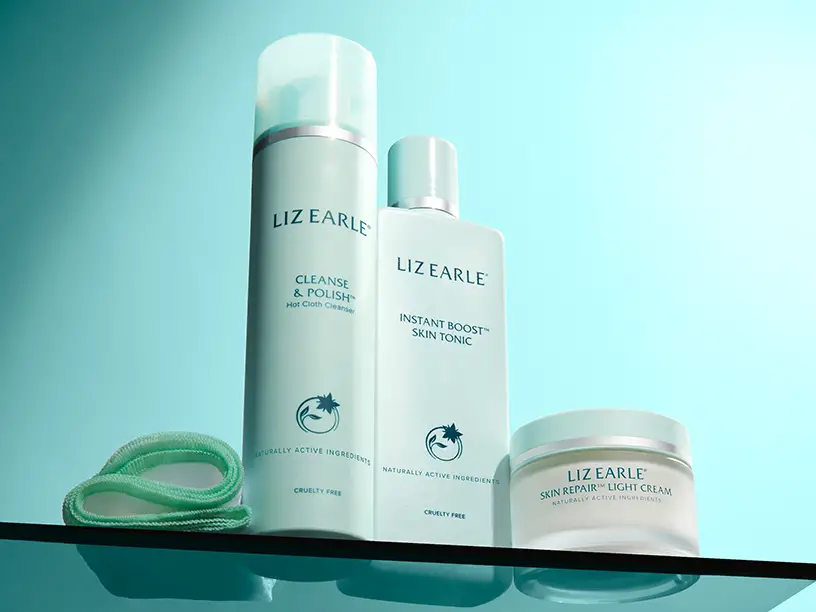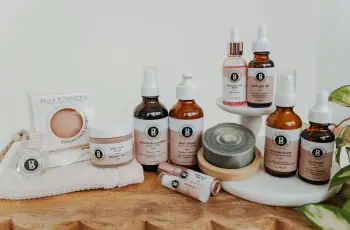
Can You Use Vitamin C and Peptides Together?
Peptides and vitamin C are two of the most celebrated ingredients in skincare. Both deliver impressive results on their own—but what happens when they’re used together?
Are they compatible, or do they cancel each other out?
If you’ve ever heard the myth that peptides and vitamin C can’t be used together, you’re not alone.
Today, we’ll explore the science behind this concern, clear up the confusion, and explain how you can safely pair these two powerful ingredients in your routine.
The Short Answer: Yes, You Can Use Peptides and Vitamin C Together
Let’s get this out of the way: peptides and vitamin C can be used together safely and effectively.
The idea that they can’t be combined comes from outdated research and misunderstandings about ingredient stability.
Today’s advanced formulations and better understanding of ingredient interactions mean these two can absolutely complement each other—when used correctly.
Why the Confusion?
Some early research suggested that combining acidic ingredients (like vitamin C) with peptides (especially copper peptides) could reduce their effectiveness.
The fear was that low pH environments might “break” the peptide bonds or cause them to degrade.
However, this has been largely debunked.
Modern studies and clinical practice show that well-formulated products containing both vitamin C and peptides can be beneficial—and many brands now successfully include both in a single product.
Vitamin C and Peptides: A Powerful Pair
Vitamin C and peptides serve different, but complementary roles in your skincare routine.
Benefits of Vitamin C:
Potent antioxidant that neutralizes free radical damage
Fades dark spots and evens skin tone
Boosts collagen production
Brightens dull complexions
Protects skin from UV and pollution damage
Benefits of Peptides:
Strengthens the skin barrier
Stimulates collagen and elastin production
Reduces fine lines and wrinkles
Calms inflammation and supports healing
Improves hydration and skin firmness
When combined, these two ingredients can provide a powerful anti-aging and skin-repairing boost.
When You Might Want to Avoid Using Them Together
While they’re compatible in theory, some people may still experience irritation when layering vitamin C and peptides—especially if they have sensitive or dry skin.
This isn’t because the ingredients clash chemically.
Instead, it’s usually due to the potency of vitamin C (especially in L-ascorbic acid form) irritating the skin, making it more reactive to anything applied after.
Signs of irritation may include:
Redness, Flushing, Tingling or stinging, Dry patches
If this sounds like your skin, don’t worry—you can still benefit from both ingredients. You just need to space them out.
How to Safely Use Vitamin C and Peptides in the Same Routine
If you want to avoid potential irritation but still get the benefits of both ingredients, here are a few dermatologist-approved strategies:
1. Use Vitamin C in the Morning, Peptides at Night
This is the most common and skin-friendly approach.
AM: Apply your vitamin C serum after cleansing. Follow with a moisturizer and sunscreen.
PM: Use your peptide serum or cream to help repair and hydrate the skin overnight.
This routine allows your skin to get the antioxidant protection of vitamin C during the day, and the skin-strengthening, collagen-boosting effects of peptides at night—without overloading your skin all at once.
2. Alternate Days
If you use a potent version of either ingredient (like a 20% vitamin C serum or a strong peptide complex), consider alternating the days you use each.
This gives your skin time to adapt while still gaining the benefits of both ingredients.
3. Layer by Texture, Not Ingredient
If you’re layering both products in the same routine, apply them in the right order.
Apply the product with the thinner consistency first.
For example, if you have a lightweight vitamin C serum and a thicker peptide moisturizer, apply the serum first.
Always finish with SPF in the morning.
What About Products That Combine Peptides and Vitamin C?
Yes, these exist—and when formulated well, they work beautifully.
Formulators can control pH, stabilize the ingredients, and ensure the final product delivers both actives without irritation.
Some serums are designed with gentle buffers or encapsulated delivery systems to minimize sensitivity.
If you’re unsure where to start, look for reputable brands with clinical testing and transparent ingredient lists.
Which Is Better: Peptides or Vitamin C?
That depends on your skin goals. Here’s a quick comparison:
Benefit Vitamin C Peptides
❌
❌
❌
If your main goals are brightening, antioxidant protection, and evening skin tone, vitamin C is ideal.
If you’re focused on repairing the barrier, calming inflammation, and improving hydration and firmness, peptides are the better fit.
That said, using both gives you a more complete approach to anti-aging and skin health.
Can You Use Peptides With Retinol?
Yes—but just like with vitamin C, it depends on your skin type and tolerance.
Peptides are gentler than retinol and can help reduce irritation caused by retinoids. If you’re new to retinol or have sensitive skin, applying peptides afterward can help restore and protect the skin barrier.
We go into more detail about this pairing in our [blog on peptides and retinol].
Recap: Peptides and Vitamin C—Together or Apart?
You can use vitamin C and peptides together, but the key is understanding your skin’s needs and sensitivity level.
Use them together if:
Your skin tolerates actives well
You’re using balanced formulations
You’re layering correctly (serum first, then moisturizer)
Use them separately if:
You have sensitive or dry skin
You experience redness or irritation
You’re using high concentrations of either ingredient
When used correctly, this duo can help you achieve smoother, firmer, brighter skin—without compromise.
Final Tips
Always patch test new products
Introduce new ingredients one at a time
Use sunscreen every morning, especially when using vitamin C
Store vitamin C in a dark, cool place to prevent oxidation
Ready to Personalize Your Skincare?
Not sure if your current products are working for your skin type? Take the Baumann Skin Type® quiz to find out exactly what your skin needs—and what to avoid.
That way, you’ll never waste money on ingredients or combinations that don’t serve your goals.
Follow us on Instagram @SkinTypeSolutions for more ingredient breakdowns, dermatologist-backed skincare tips, and product reviews.


